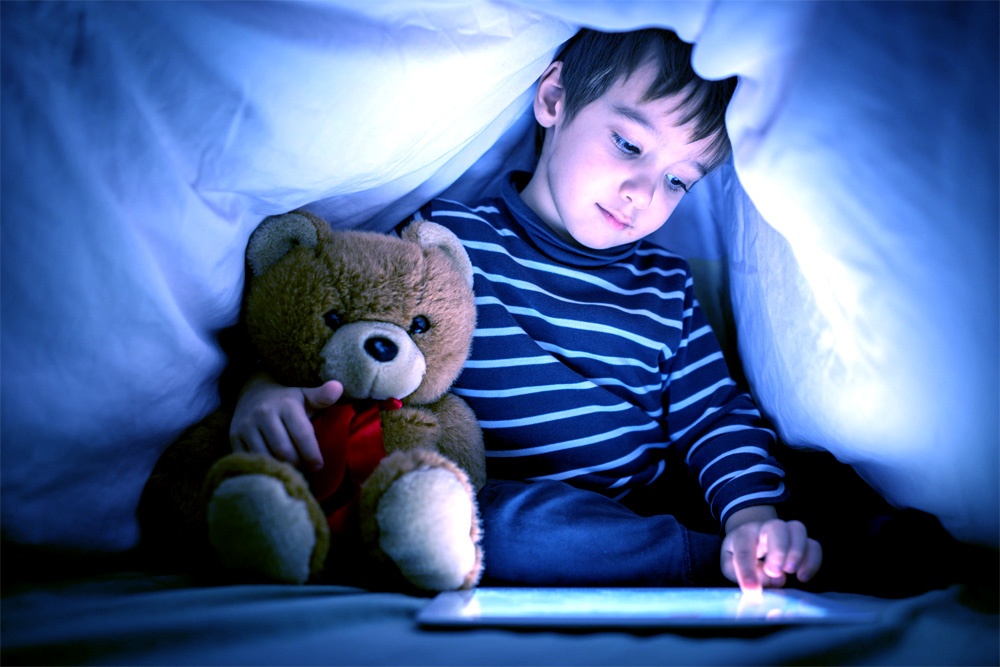Today we will get a bit scientific as we dig a bit deeper into the term “technological insomnia.” Before we entered the technology era, our bodies were in sync with the rising and setting of the sun. In the evening, people had candles, fireplaces and oil lamps to light their environment. Nowadays most of us take a look at our phone before going to bed. We start reading our messages. One message has a link, which takes us to a video. After that, we check our social media, then see an article, then another video. Almost without noticing it, an hour or more has passed. These effects in children translate to changes in behavior, motivation and academic levels as their sleep cycles are altered.
When the body is exposed to only to the natural light of the sun, the hypothalamus area of the brain sets its sleep patterns according to when it is light outside and to when it is dark. Light is detected by the retina, which sends signals to the hypothalamus. When it starts getting dark outside, the hypothalamus signals to the body to start creating sleep hormones, like melatonin, and to drop the human’s body temperature to prepare for sleep, according to the National Sleep Foundation.
Screens emit what is known as blue light. Blue light inhibits the release of melatonin. Our brain essentially has become unable to detect that it’s nighttime. Children may be at higher risk for blue light retinal damage than adults. The juvenile lens absorbs less short-wavelength light than the adult lens, allowing more blue light to reach a child’s retina.
Screen hack: Limit limit the amount of screen use at least an hour before bedtime. In so doing, you reduce the hyperarousal state of digital use and begin to get the biological sleep clock in motion.

